30 Stock Photos and Images
 Martin RA-30 Baltimore bomber aircraft Stock Photohttps://www.alamy.com/image-license-details/?v=1https://www.alamy.com/stock-photo-martin-ra-30-baltimore-bomber-aircraft-36112758.html
Martin RA-30 Baltimore bomber aircraft Stock Photohttps://www.alamy.com/image-license-details/?v=1https://www.alamy.com/stock-photo-martin-ra-30-baltimore-bomber-aircraft-36112758.htmlRMC2N25A–Martin RA-30 Baltimore bomber aircraft
 Russian cosmonauts Oleg Kononenko and Anton Shkaplerov, both Expedition 30 flight engineers during a spacewalk Stock Photohttps://www.alamy.com/image-license-details/?v=1https://www.alamy.com/stock-photo-russian-cosmonauts-oleg-kononenko-and-anton-shkaplerov-both-expedition-50424675.html
Russian cosmonauts Oleg Kononenko and Anton Shkaplerov, both Expedition 30 flight engineers during a spacewalk Stock Photohttps://www.alamy.com/image-license-details/?v=1https://www.alamy.com/stock-photo-russian-cosmonauts-oleg-kononenko-and-anton-shkaplerov-both-expedition-50424675.htmlRMCX1157–Russian cosmonauts Oleg Kononenko and Anton Shkaplerov, both Expedition 30 flight engineers during a spacewalk
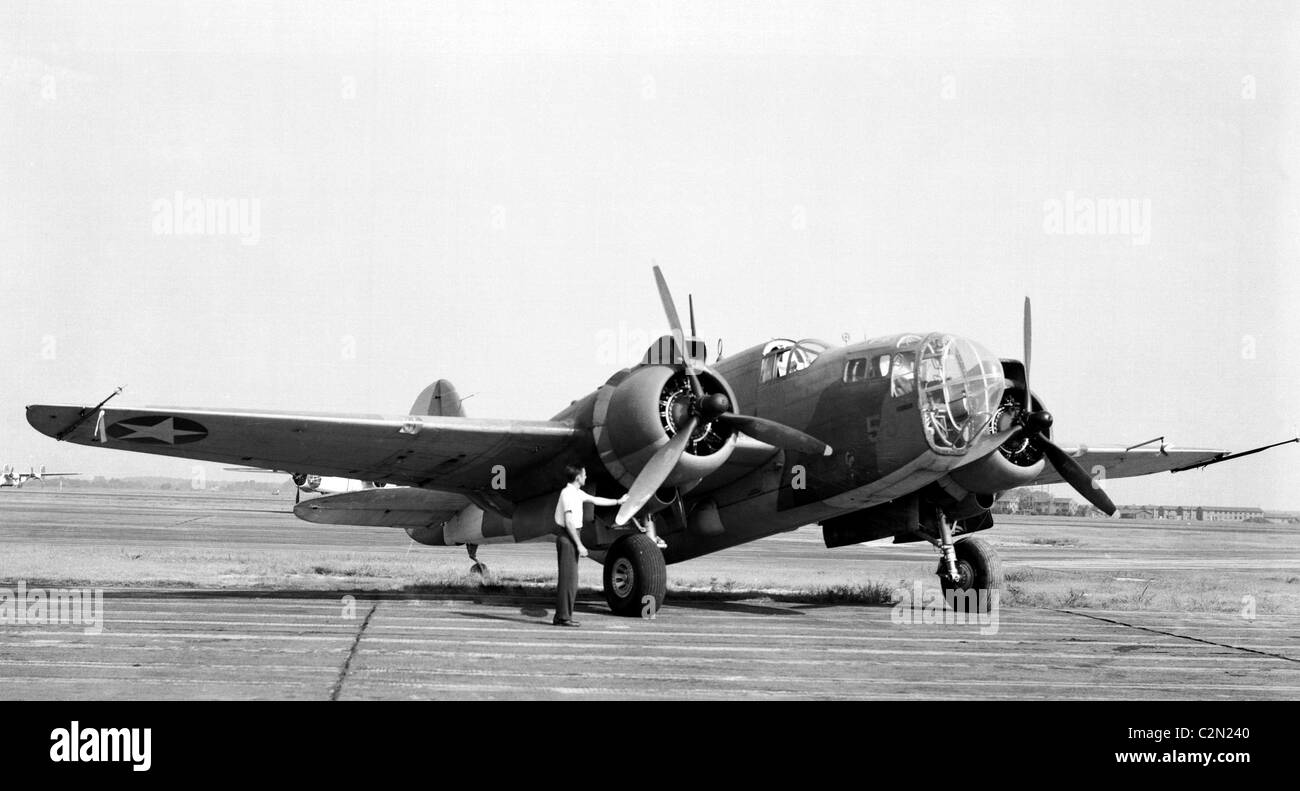 Martin RA-30 Baltimore aircraft Stock Photohttps://www.alamy.com/image-license-details/?v=1https://www.alamy.com/stock-photo-martin-ra-30-baltimore-aircraft-36112720.html
Martin RA-30 Baltimore aircraft Stock Photohttps://www.alamy.com/image-license-details/?v=1https://www.alamy.com/stock-photo-martin-ra-30-baltimore-aircraft-36112720.htmlRMC2N240–Martin RA-30 Baltimore aircraft
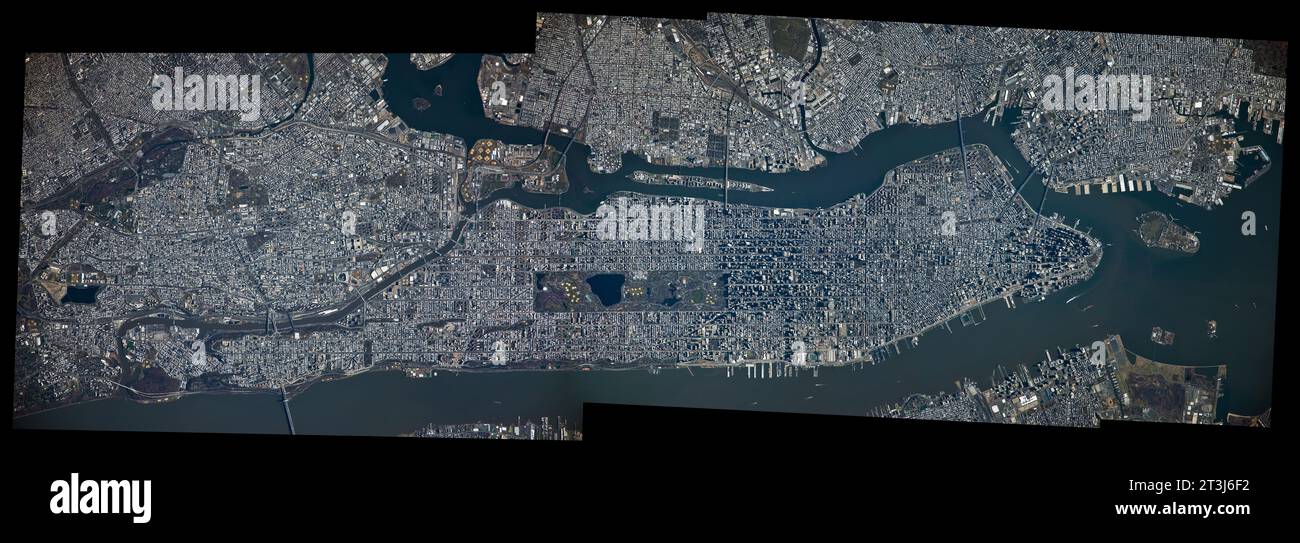 Manhattan, 30 composite photographs of Manhattan, view of Manhattan. USA Stock Photohttps://www.alamy.com/image-license-details/?v=1https://www.alamy.com/manhattan-30-composite-photographs-of-manhattan-view-of-manhattan-usa-image570186374.html
Manhattan, 30 composite photographs of Manhattan, view of Manhattan. USA Stock Photohttps://www.alamy.com/image-license-details/?v=1https://www.alamy.com/manhattan-30-composite-photographs-of-manhattan-view-of-manhattan-usa-image570186374.htmlRM2T3J6F2–Manhattan, 30 composite photographs of Manhattan, view of Manhattan. USA
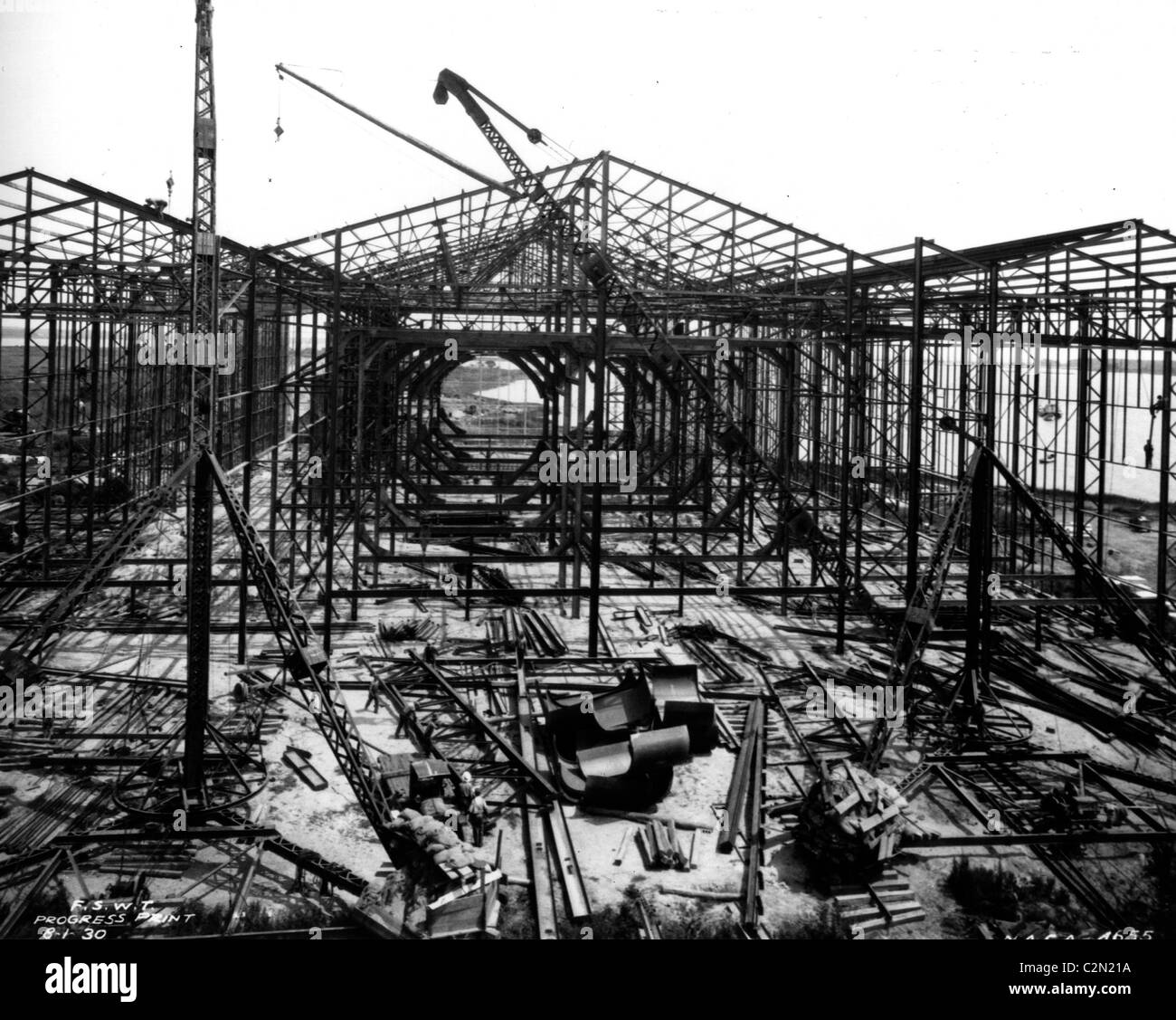 Construction of the 30 x 60 Foot Wind Tunnel at Langley, USA Stock Photohttps://www.alamy.com/image-license-details/?v=1https://www.alamy.com/stock-photo-construction-of-the-30-x-60-foot-wind-tunnel-at-langley-usa-36112646.html
Construction of the 30 x 60 Foot Wind Tunnel at Langley, USA Stock Photohttps://www.alamy.com/image-license-details/?v=1https://www.alamy.com/stock-photo-construction-of-the-30-x-60-foot-wind-tunnel-at-langley-usa-36112646.htmlRMC2N21A–Construction of the 30 x 60 Foot Wind Tunnel at Langley, USA
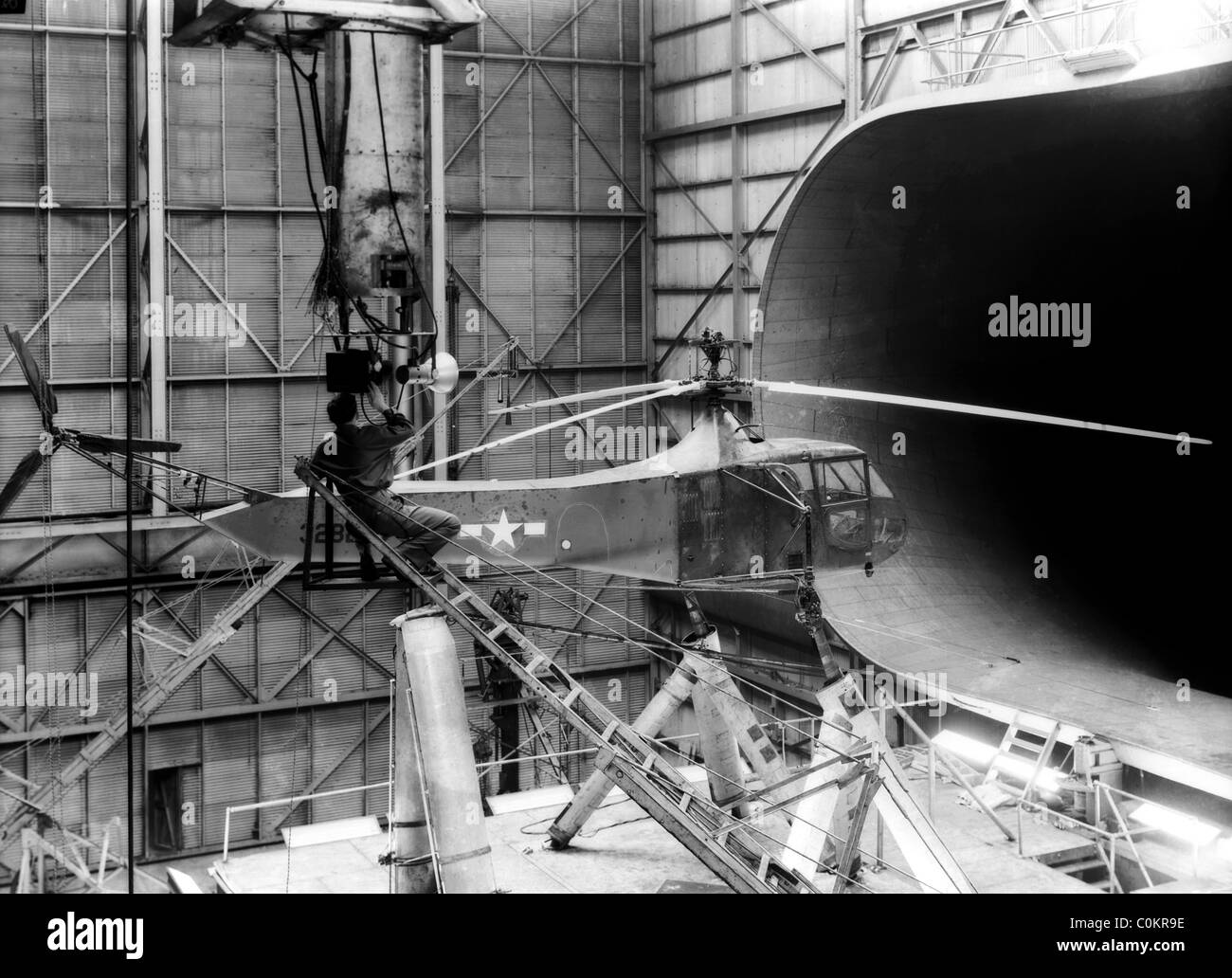 Sikorsky YR-4B/HNS-1 helicopter is seen in the 30 x 60 Full Scale Wind Tunnel. Stock Photohttps://www.alamy.com/image-license-details/?v=1https://www.alamy.com/stock-photo-sikorsky-yr-4bhns-1-helicopter-is-seen-in-the-30-x-60-full-scale-wind-34856122.html
Sikorsky YR-4B/HNS-1 helicopter is seen in the 30 x 60 Full Scale Wind Tunnel. Stock Photohttps://www.alamy.com/image-license-details/?v=1https://www.alamy.com/stock-photo-sikorsky-yr-4bhns-1-helicopter-is-seen-in-the-30-x-60-full-scale-wind-34856122.htmlRMC0KR9E–Sikorsky YR-4B/HNS-1 helicopter is seen in the 30 x 60 Full Scale Wind Tunnel.
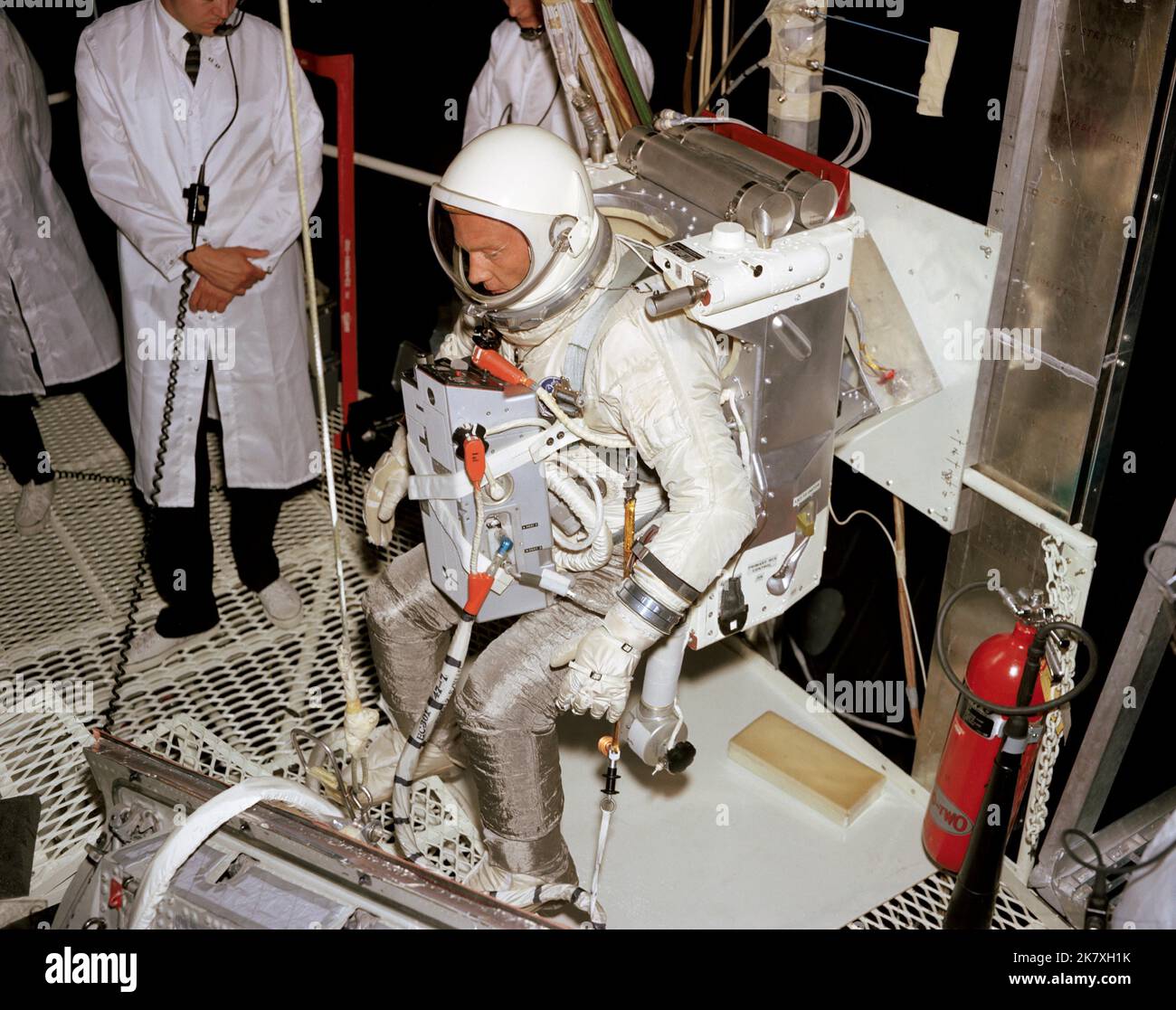 Astronaut Edwin E. 'Buzz' Aldrin, prime crew pilot of the Gemini XII spaceflight, undergoes evaluation procedures with the Astronaut Maneuvering Unit in the 30-foot altitude chamber at McDonnell Aircraft. The Astronaut Maneuvering Unit subsequently was deleted from the mission so Aldrin could demonstrate basic spacewalk capabilities required for Apollo missions. Stock Photohttps://www.alamy.com/image-license-details/?v=1https://www.alamy.com/astronaut-edwin-e-buzz-aldrin-prime-crew-pilot-of-the-gemini-xii-spaceflight-undergoes-evaluation-procedures-with-the-astronaut-maneuvering-unit-in-the-30-foot-altitude-chamber-at-mcdonnell-aircraft-the-astronaut-maneuvering-unit-subsequently-was-deleted-from-the-mission-so-aldrin-could-demonstrate-basic-spacewalk-capabilities-required-for-apollo-missions-image486777023.html
Astronaut Edwin E. 'Buzz' Aldrin, prime crew pilot of the Gemini XII spaceflight, undergoes evaluation procedures with the Astronaut Maneuvering Unit in the 30-foot altitude chamber at McDonnell Aircraft. The Astronaut Maneuvering Unit subsequently was deleted from the mission so Aldrin could demonstrate basic spacewalk capabilities required for Apollo missions. Stock Photohttps://www.alamy.com/image-license-details/?v=1https://www.alamy.com/astronaut-edwin-e-buzz-aldrin-prime-crew-pilot-of-the-gemini-xii-spaceflight-undergoes-evaluation-procedures-with-the-astronaut-maneuvering-unit-in-the-30-foot-altitude-chamber-at-mcdonnell-aircraft-the-astronaut-maneuvering-unit-subsequently-was-deleted-from-the-mission-so-aldrin-could-demonstrate-basic-spacewalk-capabilities-required-for-apollo-missions-image486777023.htmlRM2K7XH1K–Astronaut Edwin E. 'Buzz' Aldrin, prime crew pilot of the Gemini XII spaceflight, undergoes evaluation procedures with the Astronaut Maneuvering Unit in the 30-foot altitude chamber at McDonnell Aircraft. The Astronaut Maneuvering Unit subsequently was deleted from the mission so Aldrin could demonstrate basic spacewalk capabilities required for Apollo missions.
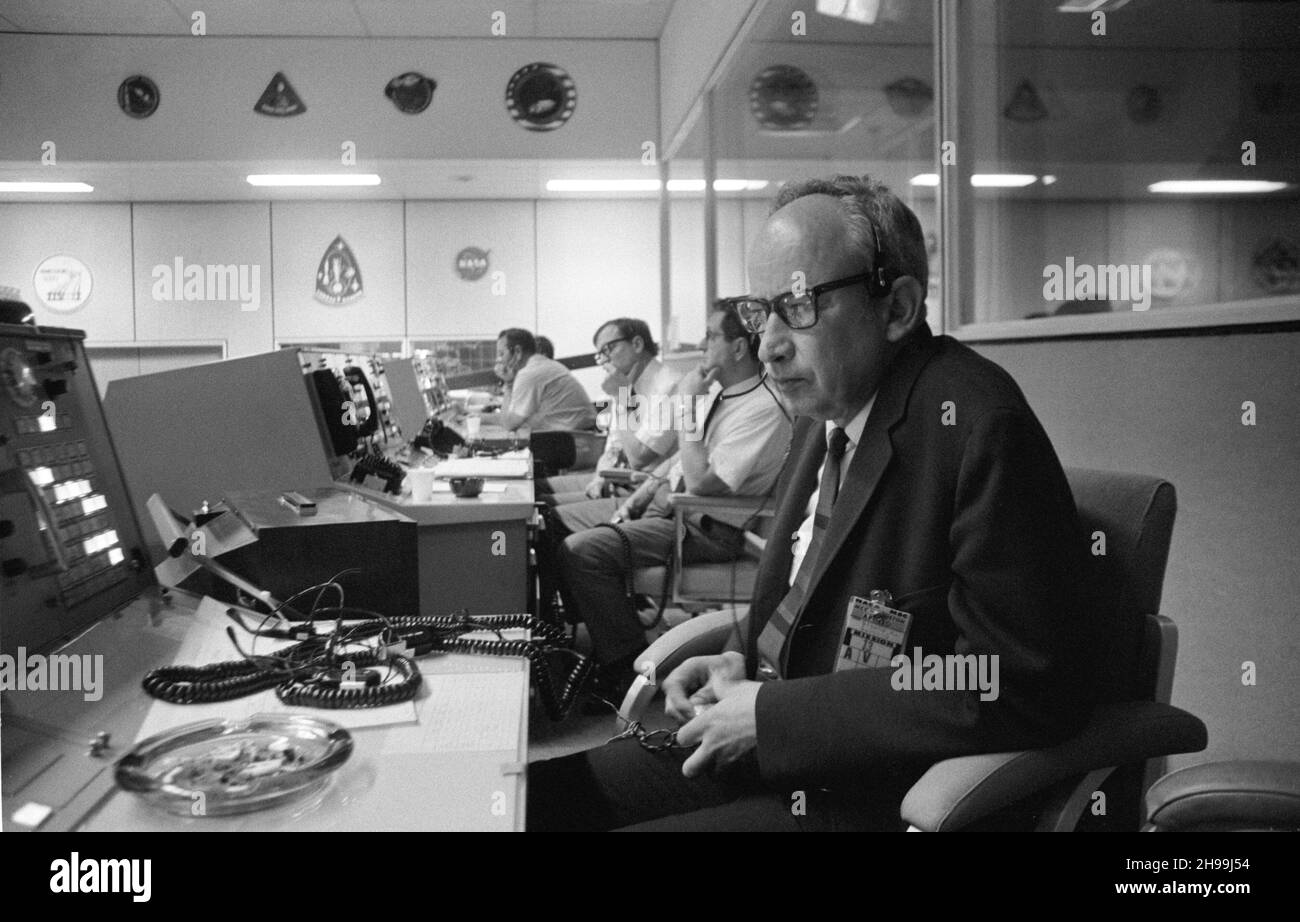 S70-34627 (11 April 1970) --- Sigurd A. Sjoberg, director of flight operations, at the Manned Spacecraft Center (MSC), views the Apollo 13 liftoff from a console in the MSC Mission Control Center (MCC), Building 30. Apollo 13 lifted off at 1:13 p.m. (CST) April 11, 1970. Photo credit: NASA Stock Photohttps://www.alamy.com/image-license-details/?v=1https://www.alamy.com/s70-34627-11-april-1970-sigurd-a-sjoberg-director-of-flight-operations-at-the-manned-spacecraft-center-msc-views-the-apollo-13-liftoff-from-a-console-in-the-msc-mission-control-center-mcc-building-30-apollo-13-lifted-off-at-113-pm-cst-april-11-1970-photo-credit-nasa-image453213296.html
S70-34627 (11 April 1970) --- Sigurd A. Sjoberg, director of flight operations, at the Manned Spacecraft Center (MSC), views the Apollo 13 liftoff from a console in the MSC Mission Control Center (MCC), Building 30. Apollo 13 lifted off at 1:13 p.m. (CST) April 11, 1970. Photo credit: NASA Stock Photohttps://www.alamy.com/image-license-details/?v=1https://www.alamy.com/s70-34627-11-april-1970-sigurd-a-sjoberg-director-of-flight-operations-at-the-manned-spacecraft-center-msc-views-the-apollo-13-liftoff-from-a-console-in-the-msc-mission-control-center-mcc-building-30-apollo-13-lifted-off-at-113-pm-cst-april-11-1970-photo-credit-nasa-image453213296.htmlRM2H99J54–S70-34627 (11 April 1970) --- Sigurd A. Sjoberg, director of flight operations, at the Manned Spacecraft Center (MSC), views the Apollo 13 liftoff from a console in the MSC Mission Control Center (MCC), Building 30. Apollo 13 lifted off at 1:13 p.m. (CST) April 11, 1970. Photo credit: NASA
 A Bernal sphere is a type of space habitat intended as a long-term home for permanent residents, first proposed in 1929 by John Desmond Bernal. Exterior view. Art work: Rick Guidice. Bernal's original proposal described a hollow non-rotating spherical shell 10 mi (16 km) in diameter, with a target population of 20,000 to 30,000 people. Stock Photohttps://www.alamy.com/image-license-details/?v=1https://www.alamy.com/a-bernal-sphere-is-a-type-of-space-habitat-intended-as-a-long-term-home-for-permanent-residents-first-proposed-in-1929-by-john-desmond-bernal-exterior-view-art-work-rick-guidice-bernals-original-proposal-described-a-hollow-non-rotating-spherical-shell-10-mi-16-km-in-diameter-with-a-target-population-of-20000-to-30000-people-image602973889.html
A Bernal sphere is a type of space habitat intended as a long-term home for permanent residents, first proposed in 1929 by John Desmond Bernal. Exterior view. Art work: Rick Guidice. Bernal's original proposal described a hollow non-rotating spherical shell 10 mi (16 km) in diameter, with a target population of 20,000 to 30,000 people. Stock Photohttps://www.alamy.com/image-license-details/?v=1https://www.alamy.com/a-bernal-sphere-is-a-type-of-space-habitat-intended-as-a-long-term-home-for-permanent-residents-first-proposed-in-1929-by-john-desmond-bernal-exterior-view-art-work-rick-guidice-bernals-original-proposal-described-a-hollow-non-rotating-spherical-shell-10-mi-16-km-in-diameter-with-a-target-population-of-20000-to-30000-people-image602973889.htmlRM2X0YR9N–A Bernal sphere is a type of space habitat intended as a long-term home for permanent residents, first proposed in 1929 by John Desmond Bernal. Exterior view. Art work: Rick Guidice. Bernal's original proposal described a hollow non-rotating spherical shell 10 mi (16 km) in diameter, with a target population of 20,000 to 30,000 people.
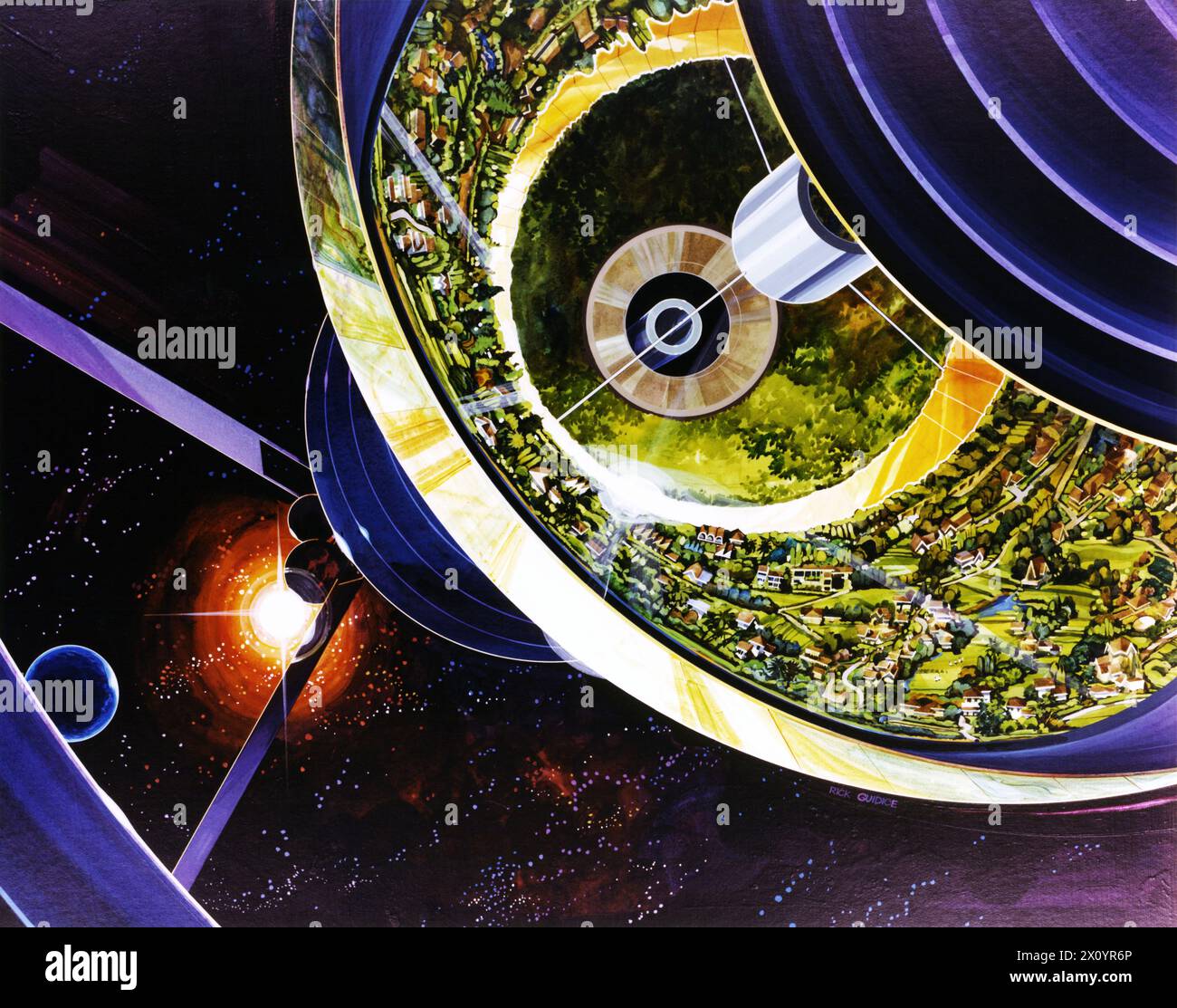 Cutaway view of Bernal Sphere. Art work: Rick Guidice. A Bernal sphere is a type of space habitat intended as a long-term home for permanent residents, first proposed in 1929 by John Desmond Bernal. Bernal's original proposal described a hollow non-rotating spherical shell 10 mi (16 km) in diameter, with a target population of 20,000 to 30,000 people. Stock Photohttps://www.alamy.com/image-license-details/?v=1https://www.alamy.com/cutaway-view-of-bernal-sphere-art-work-rick-guidice-a-bernal-sphere-is-a-type-of-space-habitat-intended-as-a-long-term-home-for-permanent-residents-first-proposed-in-1929-by-john-desmond-bernal-bernals-original-proposal-described-a-hollow-non-rotating-spherical-shell-10-mi-16-km-in-diameter-with-a-target-population-of-20000-to-30000-people-image602973806.html
Cutaway view of Bernal Sphere. Art work: Rick Guidice. A Bernal sphere is a type of space habitat intended as a long-term home for permanent residents, first proposed in 1929 by John Desmond Bernal. Bernal's original proposal described a hollow non-rotating spherical shell 10 mi (16 km) in diameter, with a target population of 20,000 to 30,000 people. Stock Photohttps://www.alamy.com/image-license-details/?v=1https://www.alamy.com/cutaway-view-of-bernal-sphere-art-work-rick-guidice-a-bernal-sphere-is-a-type-of-space-habitat-intended-as-a-long-term-home-for-permanent-residents-first-proposed-in-1929-by-john-desmond-bernal-bernals-original-proposal-described-a-hollow-non-rotating-spherical-shell-10-mi-16-km-in-diameter-with-a-target-population-of-20000-to-30000-people-image602973806.htmlRM2X0YR6P–Cutaway view of Bernal Sphere. Art work: Rick Guidice. A Bernal sphere is a type of space habitat intended as a long-term home for permanent residents, first proposed in 1929 by John Desmond Bernal. Bernal's original proposal described a hollow non-rotating spherical shell 10 mi (16 km) in diameter, with a target population of 20,000 to 30,000 people.
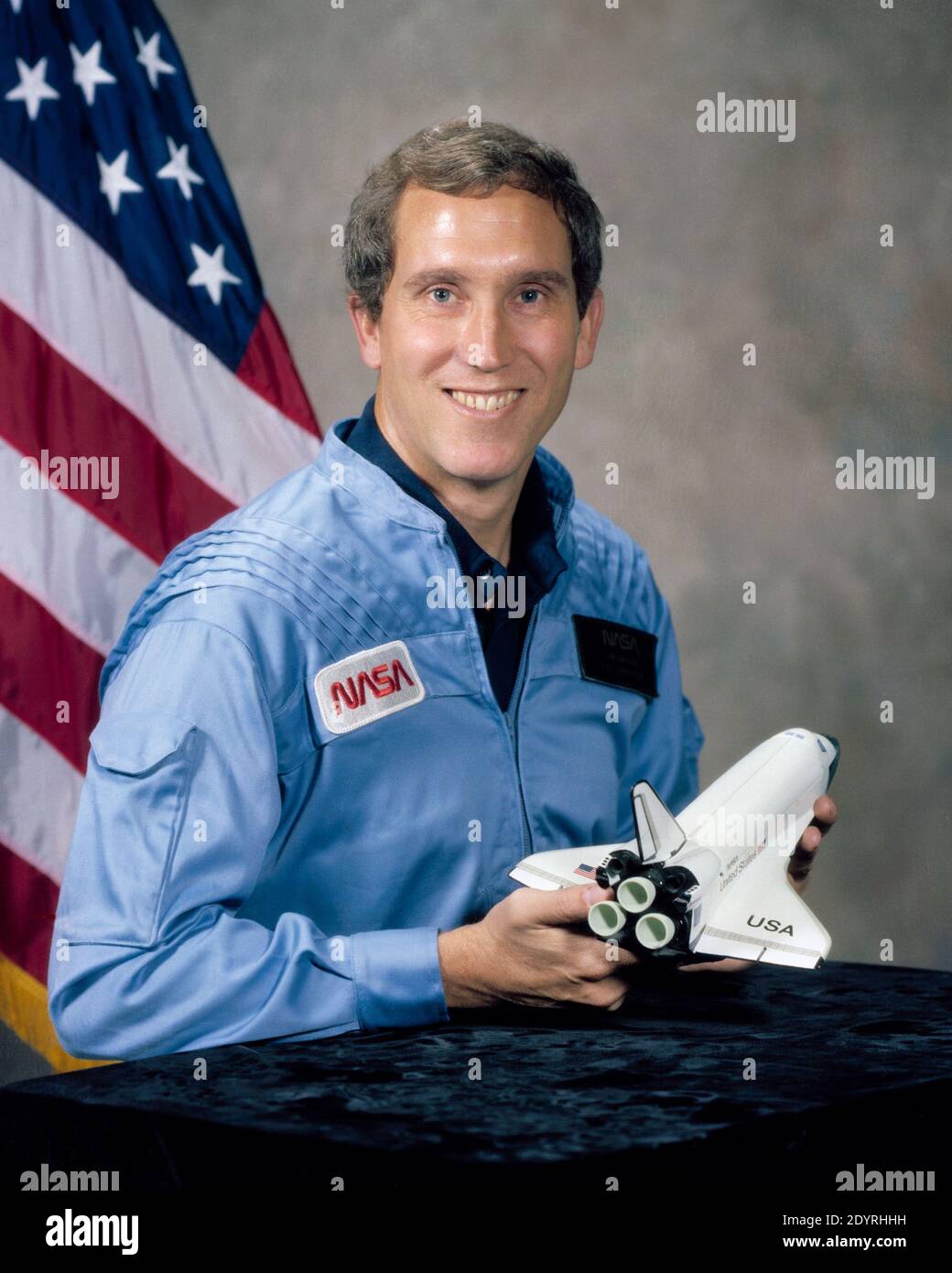 Michael John Smith (April 30, 1945 – January 28, 1986), (Capt, USN), American engineer and astronaut. He served as the pilot of the Space Shuttle Challenger when it was destroyed during the STS-51-L mission, when it broke up 73 seconds into the flight, and at an altitude of 48,000 feet (14.6 km), killing all 7 crew members. Smith's voice was the last one heard on the Challenger voice recorder. He was a Master of Science who held a degree in Aeronautical Engineering. Stock Photohttps://www.alamy.com/image-license-details/?v=1https://www.alamy.com/michael-john-smith-april-30-1945-january-28-1986-capt-usn-american-engineer-and-astronaut-he-served-as-the-pilot-of-the-space-shuttle-challenger-when-it-was-destroyed-during-the-sts-51-l-mission-when-it-broke-up-73-seconds-into-the-flight-and-at-an-altitude-of-48000-feet-146-km-killing-all-7-crew-members-smiths-voice-was-the-last-one-heard-on-the-challenger-voice-recorder-he-was-a-master-of-science-who-held-a-degree-in-aeronautical-engineering-image395742525.html
Michael John Smith (April 30, 1945 – January 28, 1986), (Capt, USN), American engineer and astronaut. He served as the pilot of the Space Shuttle Challenger when it was destroyed during the STS-51-L mission, when it broke up 73 seconds into the flight, and at an altitude of 48,000 feet (14.6 km), killing all 7 crew members. Smith's voice was the last one heard on the Challenger voice recorder. He was a Master of Science who held a degree in Aeronautical Engineering. Stock Photohttps://www.alamy.com/image-license-details/?v=1https://www.alamy.com/michael-john-smith-april-30-1945-january-28-1986-capt-usn-american-engineer-and-astronaut-he-served-as-the-pilot-of-the-space-shuttle-challenger-when-it-was-destroyed-during-the-sts-51-l-mission-when-it-broke-up-73-seconds-into-the-flight-and-at-an-altitude-of-48000-feet-146-km-killing-all-7-crew-members-smiths-voice-was-the-last-one-heard-on-the-challenger-voice-recorder-he-was-a-master-of-science-who-held-a-degree-in-aeronautical-engineering-image395742525.htmlRM2DYRHHH–Michael John Smith (April 30, 1945 – January 28, 1986), (Capt, USN), American engineer and astronaut. He served as the pilot of the Space Shuttle Challenger when it was destroyed during the STS-51-L mission, when it broke up 73 seconds into the flight, and at an altitude of 48,000 feet (14.6 km), killing all 7 crew members. Smith's voice was the last one heard on the Challenger voice recorder. He was a Master of Science who held a degree in Aeronautical Engineering.
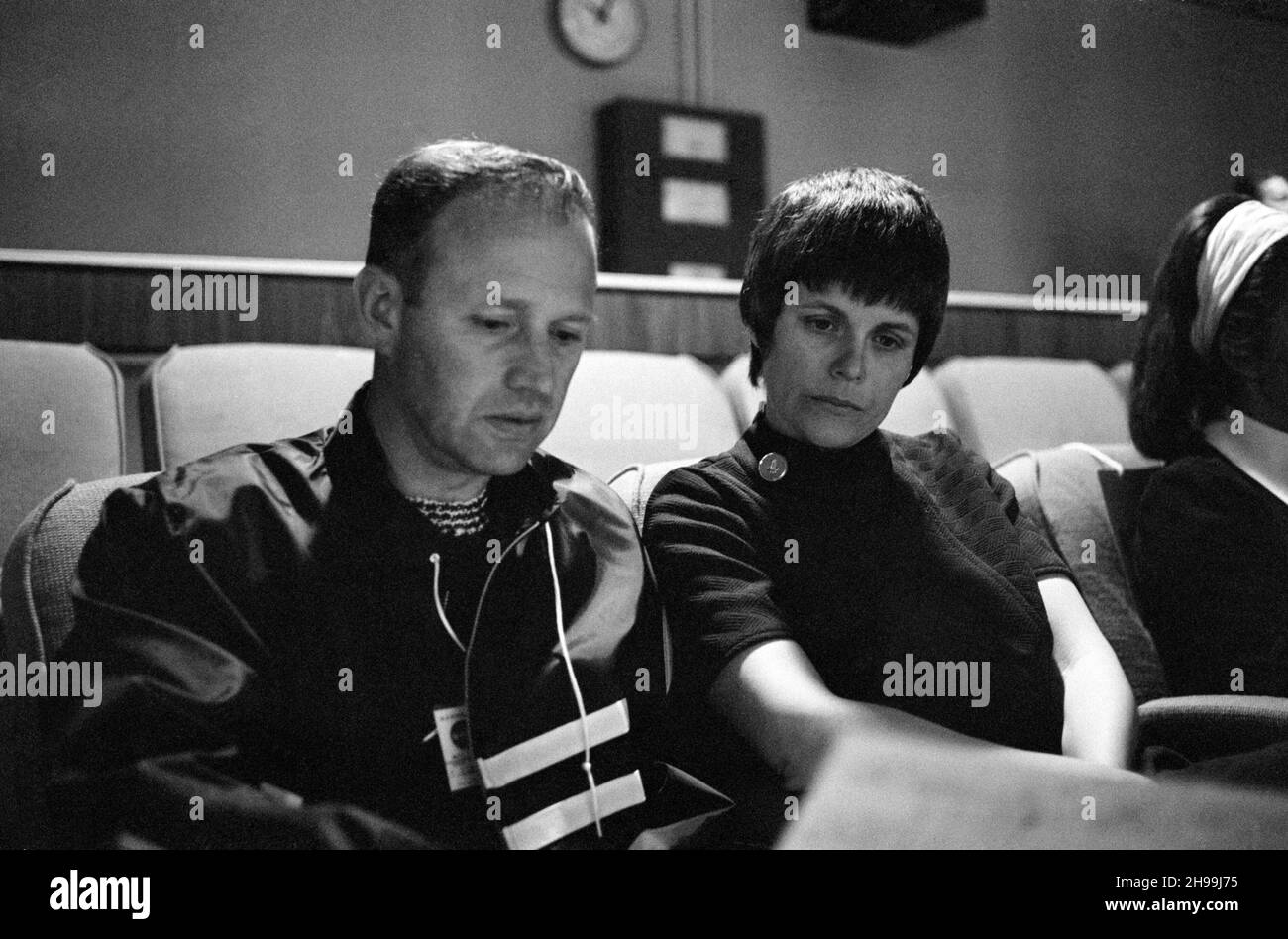 Mrs. Mary Haise receives an explanation of the revised flight plan of the Apollo 13 mission from astronaut Gerald P. Carr in the viewing room of the Mission Control Center (MCC), Building 30, at the Manned Spacecraft Center (MSC). Her husband, astronaut Fred W. Haise Jr., lunar module pilot for the Apollo 13 mission, was joining fellow crew members, astronauts James A. Lovell Jr., and John L. Swigert Jr. in making correction in their spacecraft following discovery of an oxygen cell failure several hours earlier. Stock Photohttps://www.alamy.com/image-license-details/?v=1https://www.alamy.com/mrs-mary-haise-receives-an-explanation-of-the-revised-flight-plan-of-the-apollo-13-mission-from-astronaut-gerald-p-carr-in-the-viewing-room-of-the-mission-control-center-mcc-building-30-at-the-manned-spacecraft-center-msc-her-husband-astronaut-fred-w-haise-jr-lunar-module-pilot-for-the-apollo-13-mission-was-joining-fellow-crew-members-astronauts-james-a-lovell-jr-and-john-l-swigert-jr-in-making-correction-in-their-spacecraft-following-discovery-of-an-oxygen-cell-failure-several-hours-earlier-image453213353.html
Mrs. Mary Haise receives an explanation of the revised flight plan of the Apollo 13 mission from astronaut Gerald P. Carr in the viewing room of the Mission Control Center (MCC), Building 30, at the Manned Spacecraft Center (MSC). Her husband, astronaut Fred W. Haise Jr., lunar module pilot for the Apollo 13 mission, was joining fellow crew members, astronauts James A. Lovell Jr., and John L. Swigert Jr. in making correction in their spacecraft following discovery of an oxygen cell failure several hours earlier. Stock Photohttps://www.alamy.com/image-license-details/?v=1https://www.alamy.com/mrs-mary-haise-receives-an-explanation-of-the-revised-flight-plan-of-the-apollo-13-mission-from-astronaut-gerald-p-carr-in-the-viewing-room-of-the-mission-control-center-mcc-building-30-at-the-manned-spacecraft-center-msc-her-husband-astronaut-fred-w-haise-jr-lunar-module-pilot-for-the-apollo-13-mission-was-joining-fellow-crew-members-astronauts-james-a-lovell-jr-and-john-l-swigert-jr-in-making-correction-in-their-spacecraft-following-discovery-of-an-oxygen-cell-failure-several-hours-earlier-image453213353.htmlRM2H99J75–Mrs. Mary Haise receives an explanation of the revised flight plan of the Apollo 13 mission from astronaut Gerald P. Carr in the viewing room of the Mission Control Center (MCC), Building 30, at the Manned Spacecraft Center (MSC). Her husband, astronaut Fred W. Haise Jr., lunar module pilot for the Apollo 13 mission, was joining fellow crew members, astronauts James A. Lovell Jr., and John L. Swigert Jr. in making correction in their spacecraft following discovery of an oxygen cell failure several hours earlier.
 Composite of 1400 images as part of the Wave at Saturn event organized by NASA's Cassini mission Stock Photohttps://www.alamy.com/image-license-details/?v=1https://www.alamy.com/composite-of-1400-images-as-part-of-the-wave-at-saturn-event-organized-image65364436.html
Composite of 1400 images as part of the Wave at Saturn event organized by NASA's Cassini mission Stock Photohttps://www.alamy.com/image-license-details/?v=1https://www.alamy.com/composite-of-1400-images-as-part-of-the-wave-at-saturn-event-organized-image65364436.htmlRMDP9H04–Composite of 1400 images as part of the Wave at Saturn event organized by NASA's Cassini mission